Despite his “sweetheart” deal and having seemingly evaded justice, billionaire sex offender Jeffrey Epstein was arrested
earlier this month on federal charges for sex trafficking minors.
Epstein’s arrest has again brought increased media attention to many of
his famous friends, the current president among them.
Many questions have since been asked
about how much Epstein’s famous friends knew of his activities and
exactly what Epstein was up to. The latter arguably received the most
attention after it was reported that Alex Acosta — who arranged
Epstein’s “sweetheart” deal in 2008 and who recently resigned as Donald Trump’s Labor Secretary following Epstein’s arrest — claimed that the mysterious billionaire had worked for “intelligence.”
Other investigations have made it increasingly clear that Epstein was running a blackmail operation,
as he had bugged the venues — whether at his New York mansion or
Caribbean island getaway — with microphones and cameras to record the
salacious interactions that transpired between his guests and the
underage girls that Epstein exploited. Epstein appeared to have stored much of that blackmail in a safe on his private island.
Claims of Epstein’s links and his
involvement in a sophisticated, well-funded sexual blackmail operation
have, surprisingly, spurred few media outlets to examine the history of
intelligence agencies both in the U.S. and abroad conducting similar
sexual blackmail operations, many of which also involved underage
prostitutes.
In the U.S. alone, the CIA operated numerous sexual blackmail operations throughout the country, employing prostitutes to target foreign diplomats in what the Washington Post
once nicknamed the CIA’s “love traps.” If one goes even farther back
into the U.S. historical record it becomes apparent that these tactics
and their use against powerful political and influential figures
significantly predate the CIA and even its precursor, the Office of
Strategic Services (OSS). In fact, they were pioneered years earlier by
none other than the American Mafia.
In the course of this investigation, MintPress
discovered that a handful of figures who were influential in American
organized crime during and after Prohibition were directly engaged in
sexual blackmail operations that they used for their own, often dark,
purposes.
In Part I of this exclusive investigation, MintPress
will examine how a mob-linked businessman with deep ties to notorious
gangster Meyer Lansky developed close ties with the Federal Bureau of
Investigation (FBI) while also running a sexual blackmail operation for
decades, which later became a covert part of the anti-communist crusade
of the 1950s led by Senator Joseph McCarthy (R-WI), himself known
throughout Washington for having a habit of drunkenly groping underage
teenaged girls.
Yet, it would be one of McCarthy’s
closest aides who would take over the ring in later years, trafficking
minors and expanding this sexual blackmail operation at the same time he
expanded his own political influence, putting him in close contact with
prominent figures including former President Ronald Reagan and a man
who would later become president, Donald Trump.
As will be revealed in Part II, after this figure’s death,
the blackmail operation continued under various successors in different
cities and there is strong evidence that Jeffrey Epstein became one of
them.
Samuel Bronfman and the Mob
The Prohibition Era in the United
States is often used as an example of how banning recreational
substances not only increases their popularity but also causes a boom in
criminal activity. Indeed, it was Prohibition that greatly increased
the strength of the American Mafia, as the top crime lords of the day
grew rich through the clandestine trade and sale of alcohol in addition
to gambling and other activities.
It is through the bootlegging trade
of the 1920s and the early 1930s that this story begins, as it brought
together key figures whose successors and affiliates would eventually
create a series of blackmail and sex trafficking rings that would give
rise to the likes of Jeffrey Epstein, the “Lolita Express” and “Orgy
Island.”
Samuel Bronfman never planned to
become a major producer of liquor but true to his family’s last name,
which means “brandy man” in Yiddish, he eventually began distributing
alcohol as an extension of his family’s hotel business. During Canada’s
Prohibition period, which was briefer than and preceded that of its
southern neighbor, the Bronfman family business used loopholes to skirt the law and find technically
legal ways to sell alcohol in the hotels and stores the family owned.
The family relied on its connections with members of the American Mafia
to illegally smuggle alcohol from the United States.
Soon after Prohibition ended in
Canada, it began in the United States and, by the time the flow of
illegal alcohol had turned the other way, the Bronfmans – whose business
ventures were then being led by Sam Bronfman and his brothers — were
relatively late to an already flourishing bootlegging trade.
“We were late starters in the two
most lucrative markets – on the high seas and across the Detroit River.
What came out of the border trade in Saskatchewan was insignificant by
comparison,” Bronfman once told
Canadian journalist Terence Robertson, who was then writing a biography
of Bronfman. Nonetheless, “this was when we started to make our real
money,” Bronfman recounted. Robertson’s biography on Bronfman was never
published, as he died under mysterious circumstances soon after warning his colleagues that he had uncovered unsavory information about the Bronfman family.
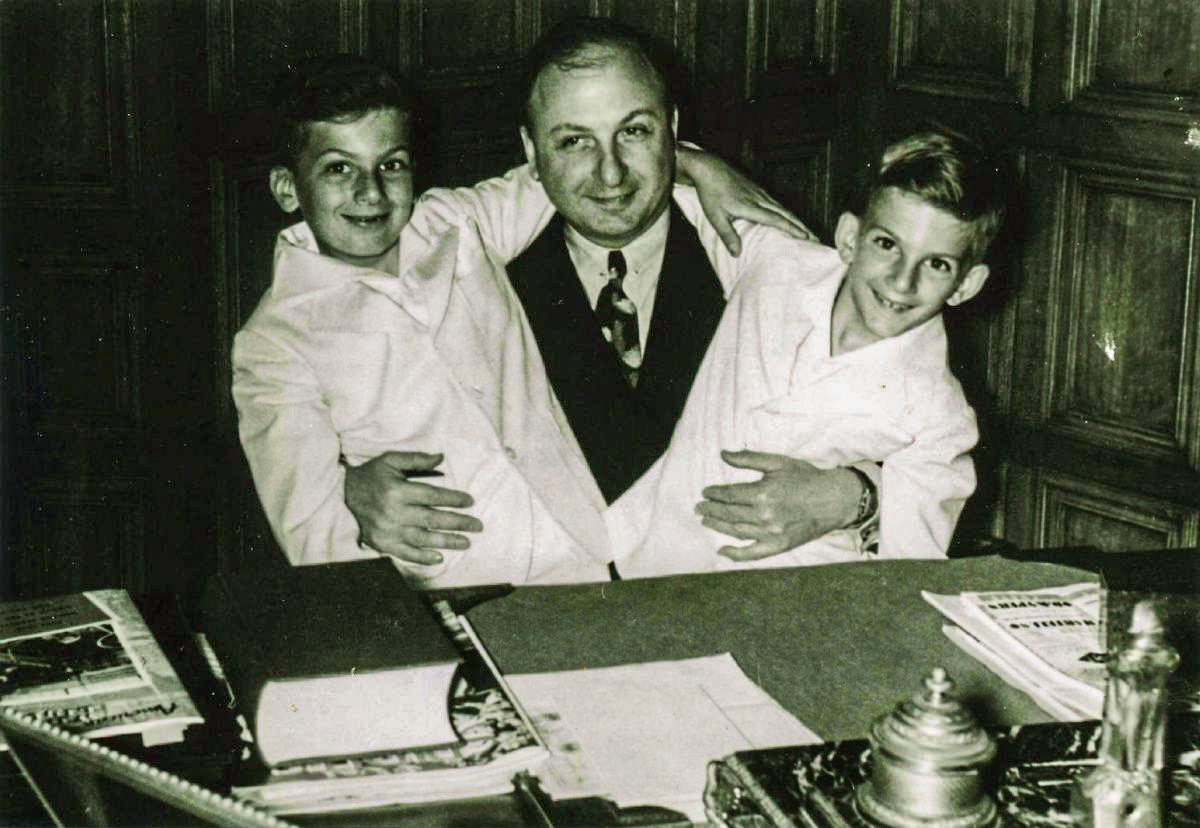
Samuel Bronfman pictured in 1937 with his sons Edgar and Charles
Key to Bronfman’s success during
American Prohibition were the ties his family had cultivated with
organized crime during Canada’s Prohibition, ties that led many
prominent members of the mob in the United States to favor Bronfman as a
business partner. Bronfman liquor was purchased in massive quantities
by many crime lords who still live on in American legend, including Charles “Lucky” Luciano, Moe Dalitz, Abner “Longy” Zwillman and Meyer Lansky.
Most of Bronfman’s mob associates
during Prohibition were members of what became known as the National
Crime Syndicate, which a 1950s Senate investigative body known as the
Kefauver Committee described as a confederation dominated by
Italian-American and Jewish-American mobs. During that investigation,
some of the biggest names in the American Mafia named Bronfman
as a central figure in their bootlegging operations. The widow of
notorious American mob boss Meyer Lansky even recounted how Bronfman had
thrown lavish dinner parties for her husband.
Years later, Samuel Bronfman’s
children and grandchildren, their family’s ties to the criminal
underworld intact, would go on to associate closely with Leslie Wexner,
allegedly the source of much of Epstein’s mysterious wealth, and other
mob-linked “philanthropists,” and some would even manage their own
sexual blackmail operations, including the recently busted blackmail-based “sex cult” NXIVM.
The later generations of the Bronfman family, particularly Samuel
Bronfman’s sons Edgar and Charles, will be discussed in greater detail
in Part II of this report.
Lewis Rosenstiel’s dark secret
Crucial to Bronfman’s Prohibition-era bootlegging operations were two middlemen, one of whom
was Lewis “Lew” Rosenstiel. Rosenstiel got his start working at his
uncle’s distillery in Kentucky before Prohibition. Once the law banning
alcohol was in force, Rosenstiel created the Schenley Products Company,
which would later become one of the largest liquor companies in North
America.
Though he was a high school drop-out
and not particularly well-connected socially at the time, Rosenstiel
happened to have a “chance” meeting with Winston Churchill in 1922 while
on vacation in the French Riviera. According to the New York Times, Churchill
“advised him [Rosenstiel] to prepare for the return of liquor sales in
the United States.” Rosenstiel somehow managed to secure the funding of the elite and respected Wall Street firm Lehman Brothers to finance his purchase of shuttered distilleries.
Officially, Rosenstiel is said to have built his company and wealth after
Prohibition, by following Churchill’s advice to prepare for Repeal.
However, he was clearly involved in bootlegging operations and was even
indicted for bootlegging in 1929, though he evaded conviction. Like
Bronfman, Rosenstiel was close to organized crime, particularly members
of the mostly Jewish-American and Italian-American mob alliance known as
the National Crime Syndicate.
Subsequent New York state legislative investigations would allege that Rosenstiel “was part of a ‘consortium’ with underworld figures that bought liquor in Canada [from Samuel Bronfman]”, whose other members
were “Meyer Lansky, the reputed organized crime leader; Joseph Fusco,
an associate of late Chicago gangster Al Capone and Joseph Linsey, a
Boston man Mr. Kelly [the congressional investigator testifying]
identified as a convicted bootlegger.” Rosenstiel’s relationship with
these men, particularly Lansky, would continue long after Prohibition and Samuel Bronfman, for his part, would also maintain his mob ties.
In addition to his friends in the mob, Rosenstiel also cultivated close ties with the FBI, developing a close relationship with longtime FBI Director J. Edgar Hoover and making Hoover’s right-hand man and longtime assistant at the FBI, Louis Nichols, the Vice President of his Schenley empire in 1957.
Despite their similar backgrounds as
bootlegger barons turned “respectable” businessmen, Bronfman’s and
Rosenstiel’s personalities were drastically different and their
relationship was complicated, at best. One example of the
dissimilarities between North America’s top liquor barons was how they
treated their staff. Bronfman was not necessarily known for being a
cruel boss, whereas Rosenstiel was known for
his erratic and “monstrous” behavior towards employees as well as his
unusual practice of bugging his offices in order to hear what employees
said about him when he wasn’t present.
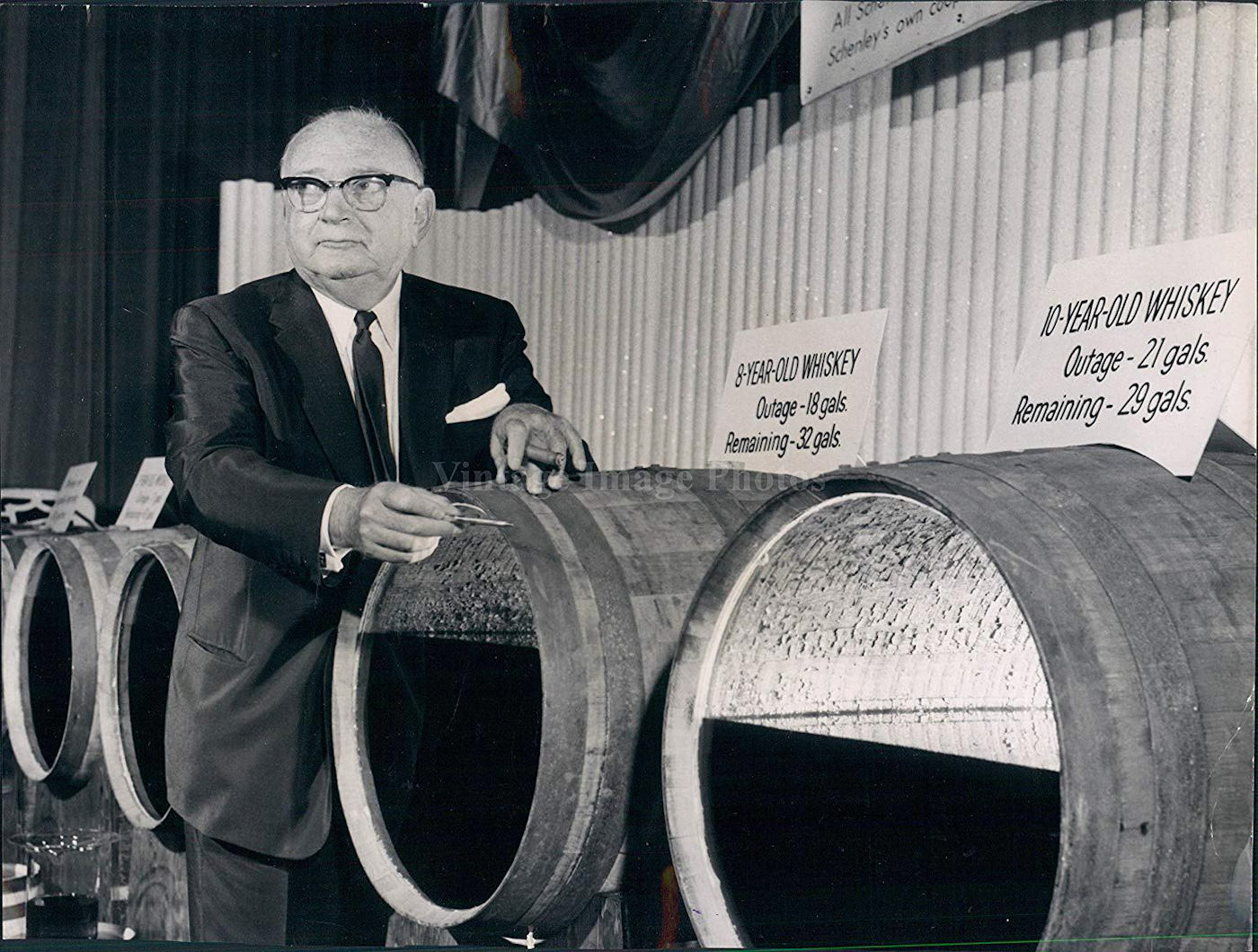
Rosenstiel was connected to both the FBI and to organized crime
Such differences between Bronfman and
Rosenstiel were also reflected in their personal lives. While Bronfman
married only once and was loyal to his wife, Rosenstiel was married five
times and was known for his relatively closeted bisexual antics, a part
of his life that was well-known to many of his close associates and employees.
Though for years there were only
hints to this other side of the controversial businessman, details
emerged years later during a divorce proceeding brought by Rosenstiel’s
fourth wife, Susan Kaufman, that would back the claims. Kaufman alleged
that Rosenstiel hosted extravagant parties that included “boy
prostitutes” that her husband had hired “for the enjoyment” of certain
guests, which included
important government officials and prominent figures in America’s
criminal underworld. Kaufman would later make the same claims under oath
during the hearing of the New York’s State Joint Legislative Committee
on Crime in the early 1970s.
Not only did Rosenstiel organize
these parties, but he also made sure that their venues were bugged with
microphones that recorded the antics of his high-profile guests. Those
audio recordings, Kaufman alleged, were then kept for the purpose of
blackmail. Though Kaufman’s claims are shocking, her testimony was deemed credible
and held in high regard by the former chief counsel of the Crime
Committee, New York Judge Edward McLaughlin, and committee investigator
William Gallinaro and aspects of her testimony were later corroborated
by two separate witnesses who were unknown to Kaufman.
These “blackmail parties” offer a
window into an operation that would later become more sophisticated and
grow dramatically in the 1950s under Rosenstiel’s “field commander” (a
nickname given by Rosenstiel to an individual to be named shortly in
this report). Many of the people connected to Rosenstiel’s “field
commander” during the 70s and 80s have again found their names in the
press following the recent arrest of Jeffrey Epstein.
The “Untouchable” Mobster
Bronfman and Rosenstiel became
legendary in the North American liquor business, in part due to their
fight for supremacy in the industry, which the New York Times described
as often erupting “into bitter personal and corporate battles.” Despite
their dueling in the corporate world, the one thing that united the two
businessmen more than anything else was their close connection to
American organized crime, particularly renowned mobster Meyer Lansky.
Lansky is one of the most notorious
gangsters in the history of American organized crime and is notable for
being the only famous mobster rising to notoriety in the 1920s who managed to die an old man and never serve a day in jail.
Lansky’s long life and ability to
avoid prison time was largely the result of his close relationships to
powerful businessmen like Bronfman and Rosenstiel (among many others),
the Federal Bureau of Investigation (FBI) and the U.S. intelligence community, as well as his role in establishing several blackmail and extortion rings that helped
him keep the law at arm’s length. Indeed, when Lansky was finally
charged with a crime in the 1970s, it was the Internal Revenue Service
that brought the charges, not the FBI, and he was charged with and
acquitted of tax evasion.
Lansky was remarkably close to both Bronfman and Rosenstiel. Bronfman regularly threw
“lavish dinner parties” in Lansky’s honor both during and after
Prohibition. These parties were remembered fondly by Lansky’s wife, and Lansky in turn did favors for Bronfman, ranging
from exclusive protection of his shipments during Prohibition to
getting him tickets to coveted “fight of the century” boxing matches.
Rosenstiel also threw regular dinner
parties honoring Lansky. Susan Kaufman, Rosenstiel’s ex-wife, claimed to
have taken numerous pictures of her ex-husband and Lansky socializing
and partying together, photos that were also seen by Mary Nichols of The Philadelphia Inquirer.
In addition, Lansky, per Kaufman’s recollection, was one of the
individuals that Rosenstiel sought to protect from legal scrutiny as
part of his child prostitution and blackmail ring targeting high-ranking
officials, and he was overheard saying
that if the government “ever brings pressure against Lansky or any of
us, we’ll use this [a specific recording taken at one of the ‘parties’]
as blackmail.”
Lansky was known to address Rosenstiel as “Supreme Commander,” a title that would later be used
to refer to Rosenstiel by another individual deeply connected to the
mob and sexual blackmail operations, previously referred to in this
report as Rosenstiel’s “Field Commander.”
Lansky also had close ties to the CIA and U.S. military intelligence. During World War II, Lansky — along with his associate Benjamin “Bugsy” Siegel — worked with Naval intelligence in what was codenamed “Operation Underworld,” an operation the existence of which the government denied for over 40 years.
Journalist and noted chronicler of CIA covert activities, Douglas Valentine, noted in his book The CIA as Organized Crime: How Illegal Operations Corrupt America and the World
that the government’s cooperation with the Mafia during World War II
led to its expansion after the war and set the stage for its future
collaboration with U.S. intelligence.
According to Valentine:
Top government officials
were also aware that the government’s Faustian pact with the Mafia
during World War II had allowed the hoods to insinuate themselves into
mainstream America. In return for services rendered during the war,
Mafia bosses were protected from prosecution for dozens of unsolved
murders. […]
The Mafia was a huge problem in 1951 [when the Kefauver Committee
was convened], equivalent to terrorism today. But it was also a
protected branch of the CIA, which was co-opting criminal organizations
around the world and using them in its secret war against the Soviets
and Red Chinese. The Mafia had collaborated with Uncle Sam and had
emerged from World War II energized and empowered. They controlled
cities across the country.”
Indeed, not long after its creation,
the CIA forged ties with Lansky at the behest of CIA counterintelligence
chief James J. Angleton. The CIA would later turn to the Lansky-linked mob in the early 1960s as part of its consistently fruitless quest to assassinate Cuban leader Fidel Castro, showing that the CIA maintained its contacts with Lansky-controlled elements of the Mafia long after the initial meeting with Lansky took place.
The CIA also had close connections
to associates of Lansky, such as Edward Moss, who did public relations
work for Lansky and was said to be of “interest” to the CIA by the
agency’s then-inspector general J.S. Earman. Harry “Happy” Meltzer was
also another Lansky associate that was a CIA asset and the CIA asked
Meltzer to join an assassination team in December 1960.
In addition to the CIA, Lansky was
also connected to a foreign intelligence agency through Tibor Rosenbaum,
an arms procurer and high-ranking official in Israel’s Mossad, whose
bank – the International Credit Bank of Geneva – laundered much of Lansky’s ill-gotten gains and recycled them into legitimate American businesses.
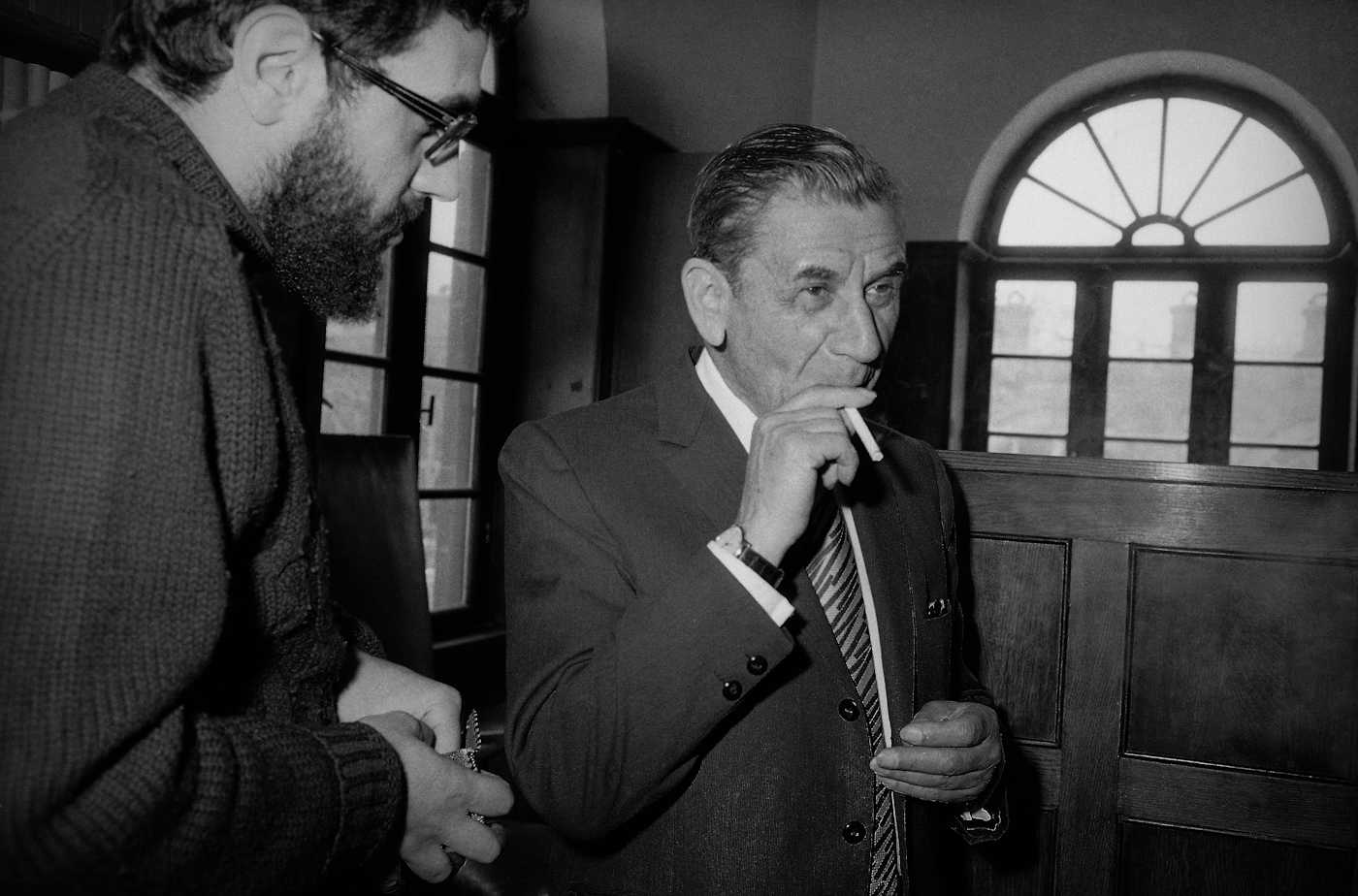
Lansky outside the High Court of Israel where he sought permission to emigrate in 1972. Photo | AP
Journalist Ed Reid, author of the Virginia Hill biography The Mistress and the Mafia,
wrote that Lansky was attempting to entrap powerful people through
sexual blackmail as far back as 1939. Reid contends that Lansky sent Ms.
Hill to Mexico, where his West Coast connections had established a drug
ring that later involved the OSS, the forerunner to the CIA, to seduce
numerous “top politicians, army officers, diplomats and police
officials.”
Eventually, Lansky was credited with
obtaining compromising photos of FBI Director J. Edgar Hoover sometime
in the 1940s, which showed “Hoover in some kind of gay situation”,
according to a former Lansky associate, who also said that Lansky had often claimed, “I fixed that sonofabitch.” The photos showed Hoover engaged in sexual activity with his long-time friend, FBI Deputy Director Clyde Tolson.
At some point, these photos fell into the hands of CIA counterintelligence chief James J. Angleton, who later showed
the photos to several other CIA officials, including John Weitz and
Gordon Novel. Angleton was in charge of the CIA’s relationship with the
FBI and Israel’s Mossad until he left the agency in 1972 and, as was
recently mentioned, he was also in contact with Lansky.
Anthony Summers, former BBC journalist and author of Official and Confidential: The Secret Life of J. Edgar Hoover,
has argued that it was not Lansky, but William Donovan, the director of
the OSS, who obtained the original photos of Hoover and later shared
them with Lansky.
Summers also stated
that “To [gangster Frank] Costello and Lansky, the ability to corrupt
politicians, policemen and judges was fundamental to Mafia operations.
The way they found to deal with Hoover, according to several mob
sources, involved his homosexuality.” This anecdote shows that Lanksy
and the CIA maintained a covert relationship, which included, among
other things, the sharing of blackmail material (i.e., “intelligence”).
It is also possible that Hoover was
ensnared by the mob during one of Rosenstiel’s “blackmail parties,” at
which Hoover sometimes found himself in attendance with prominent
figures of the Mafia. Hoover was said to have worn women’s clothing at
the some of the events and Meyer Lansky’s wife later said that her husband had photos of the former FBI director in drag. Furthermore, Hoover is on record
showing an unusual concern in the FBI’s handling of Rosenstiel’s
criminal links as early as 1939, the same year that his close associate
Lansky was actively orchestrating the sexual blackmail of powerful
political figures.
The blackmail acquired on Hoover and the mob’s possession of the evidence has been cited as a major factor in Hoover’s decades-long denial that nationwide networks of organized crime were a
serious issue. Hoover asserted that it was a decentralized, local issue
and therefore outside of the bureau’s jurisdiction. By the time Hoover
finally acknowledged the existence of national organized crime networks
in 1963, they were so entrenched in the U.S. establishment that they were untouchable.
Congressional crime consultant Ralph Salerno told Summers
in 1993 that Hoover’s willful ignorance of organized crime for most of
his career as FBI director “allowed organized crime to grow very strong
in economic and political terms, so that it became a much bigger threat
to the wellbeing of this country than it would have been if it had been
addressed much sooner.”
J. Edgar Hoover: Blackmail Victim?
Most records place the beginning of
Hoover’s relationship with Rosenstiel in the 1950s, the same decade when
Susan Kaufman reported that Hoover was attending Rosenstiel’s blackmail
parties. Rosenstiel’s FBI file, obtained by
Anthony Summers, cites the first Rosenstiel meeting as taking place in
1956, though Summers notes that there is evidence that they had met much
earlier. After requesting the meeting, Rosenstiel was granted a
personal face-to-face with the director in a matter of hours. The FBI
file on Rosenstiel also reveals that the liquor baron heavily lobbied
Hoover to aid his business interests.
During that time, the salacious
details of Hoover’s sex life were already known to the U.S. intelligence
community and to the mob, and Hoover was aware that they knew of his
closeted sexuality and penchant for women’s clothing. Yet, Hoover
apparently seemed to embrace the very type of sexual blackmail operation
that had compromised his private life, given that he was seen at many
of Rosenstiel’s “blackmail parties” in the 1950s and 1960s, including at
venues such as Rosenstiel’s personal home and later at Manhattan’s
Plaza Hotel. Hoover’s penchant for dressing in drag was also described by two witnesses who were not connected to Susan Kaufman.
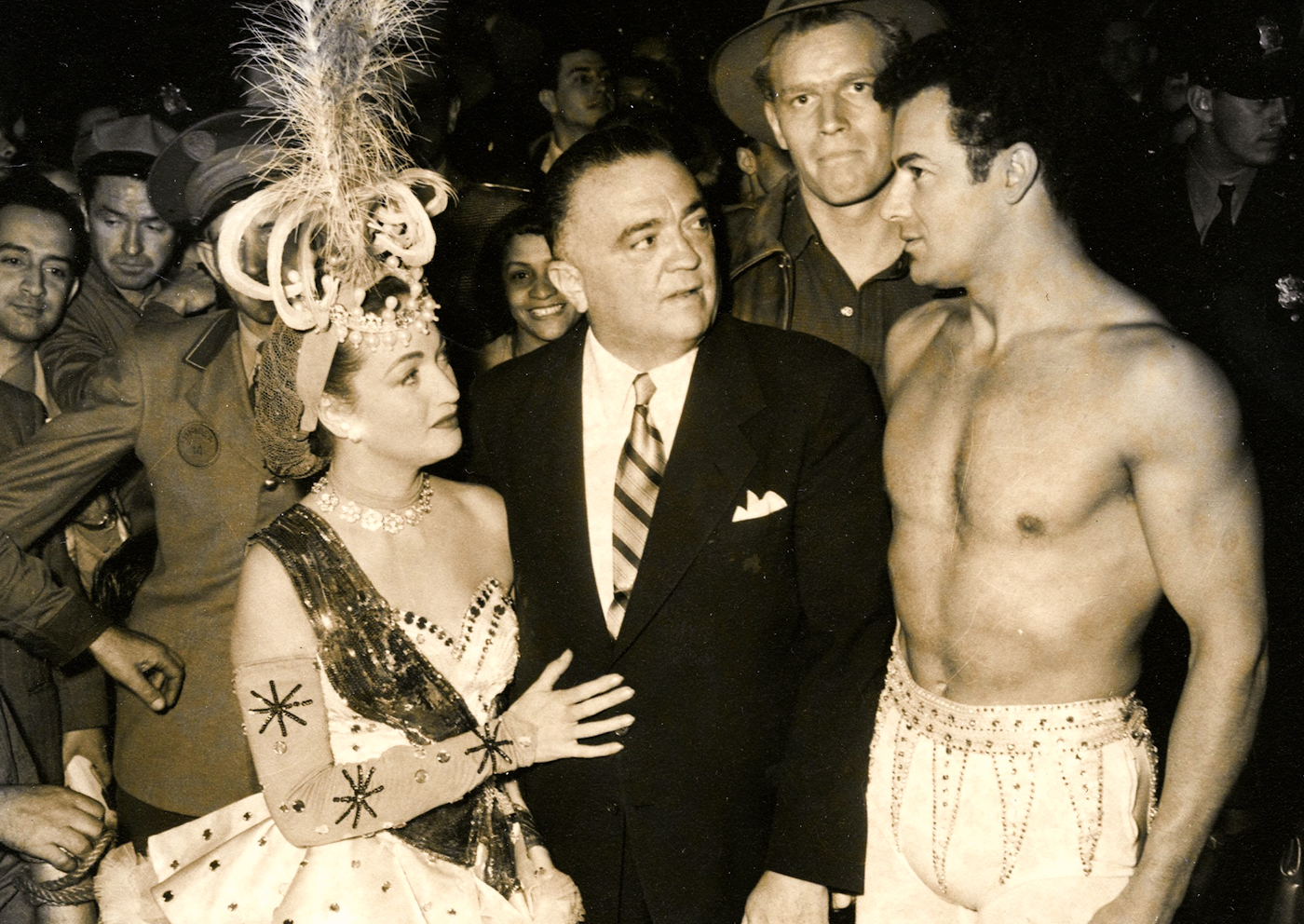
Hoover with Dorothy Lamour on the set of The Greatest Show on Earth in 1951
Soon after their first “official”
meeting, the public relationship between the two men quickly flourished,
with Hoover even sending Rosenstiel flowers when he fell ill. Summers reported that,
in 1957, Rosenstiel was heard telling Hoover during a meeting, “your
wish is my command.” Their relationship remained close and intimate
throughout the 1960s and beyond.
Like Rosenstiel, Hoover was well-known
for amassing blackmail on friend and foe alike. Hoover’s office
contained “secret files” on numerous powerful people in Washington and
beyond, files he used to gain favors and protect his status as FBI
director for as long as he wished.
Hoover’s own propensity for blackmail
suggests that he may have associated with Rosenstiel’s sexual blackmail
operation more directly, given he already knew he was compromised and
his involvement in the operation would have served as a means of
procuring the blackmail he coveted for his own purposes. Indeed, if
Hoover was merely being blackmailed and extorted by the
Lansky-Rosenstiel connected mob, it is unlikely that he would have been
so friendly to Rosenstiel, Lansky and the other mobsters at these
gatherings and participated in them with such regularity.
According to journalist and author
Burton Hersh, Hoover was also tied to Sherman Kaminsky, who ran a sexual
blackmail operation in New York involving young male prostitutes. That
operation was busted and investigated
in a 1966 extortion probe led by Manhattan District Attorney Frank
Hogan, though the FBI quickly took over the investigation and photos of
Hoover and Kaminsky together soon disappeared from the case file.
Hoover and Rosenstiel’s deep ties
would continue to develop over the years, an example of which can be
seen in Rosenstiel’s hiring of long-time Hoover aide Louis Nichols as
the vice president of his Schenley liquor empire and Rosenstiel’s donation of over $1 million to the J. Edgar Hoover Foundation, which Nichols also ran at the time.
There is also more than one
documented occasion wherein Hoover attempted to use blackmail to protect
Rosenstiel and his “field commander,” none other than the infamous Roy
Cohn, the other key figure in Rosenstiel’s sexual blackmail operation
involving minors.
The Making of a Monster
Decades after his death, Roy Cohn remains a controversial figure in large part because of his close, personal relationship
with current U.S. President Donald Trump. Yet reports on Cohn, both in
recent and in past years, often miss the mark in their characterization
of the man who became closely associated with the Reagan White House,
the CIA, the FBI, organized crime and, incidentally, many of the figures
who would later surround Jeffrey Epstein.
To understand the true nature of the man, it is essential to examine his rise to power in the early 1950s when, at just 23 years of age, he became a key figure in the high-profile trial of Soviet spies Ethel and Julius Rosenberg and later as the right-hand man of Senator Joseph McCarthy (R-WI).
Cohn’s dedication to anti-communist
activities in the 1950s is allegedly what first endeared him to J. Edgar
Hoover, whom he first met in 1952. During that meeting, as described by
Hersh in Bobby and J. Edgar: The Historic Face-Off Between the Kennedys and J. Edgar Hoover That Transformed America,
Hoover expressed admiration for Cohn’s aggressive and manipulative
tactics and told Cohn to “call me directly” whenever he had information
worth sharing. From that point on, Cohn and Hoover “traded favors,
effusive compliments, gifts and elaborate private dinners. It quickly
became ‘Roy’ and ‘Edgar.’” Hersh also describes Hoover as Cohn’s soon to
be “consigliere.”
The date and circumstances around
Cohn’s introduction to Rosenstiel are harder to come by. It is possible
that the connection was made through Roy Cohn’s father, Albert Cohn, a
prominent judge and an influential figure in the New York City
Democratic Party apparatus then run by Edward Flynn. It was later revealed
that the Democratic organization dominated by Flynn and based in the
Bronx had long-standing connections to organized crime, including
associates of Meyer Lansky.
Regardless of how or when it began, the relationship between Cohn and Rosenstiel was close and was often likened to that
of a father and son. They were said to frequently salute each other in
public and remained close until Rosenstiel was near death, at which
point Cohn attempted to trick
his then-barely conscious and senile “friend” and client into naming
him the executor and trustee of the liquor magnate’s estate, valued at
$75 million (more than $334 million in today’s dollars).
LIFE magazine reported
in 1969 that Cohn and Rosenstiel had for years referred to one another
as “Field Commander” and “Supreme Commander,” respectively. Media
references to these nicknames appear in other articles from the period.
Though LIFE
and other outlets had interpreted this as merely an anecdote about the
nicknames shared in jest between close friends, the fact that notorious
crime lord Meyer Lansky also called
Rosenstiel “Supreme Commander” and the fact that Cohn and Rosenstiel
would later become intimately involved in the same pedophile sex ring
suggests that there may have been more to these “nicknames.” After all,
the mob to which Rosenstiel was connected often used military-themed
titles like “soldier” and “lieutenant” to differentiate the rank and
importance of its members.
Once he had made his connection with
Hoover, Cohn’s star began to rise even higher in Washington. Hoover’s
recommendation of Cohn would become the deciding factor in his
appointment as Sen. McCarthy’s general counsel over Robert Kennedy, a
rival and bitter enemy of Cohn’s.
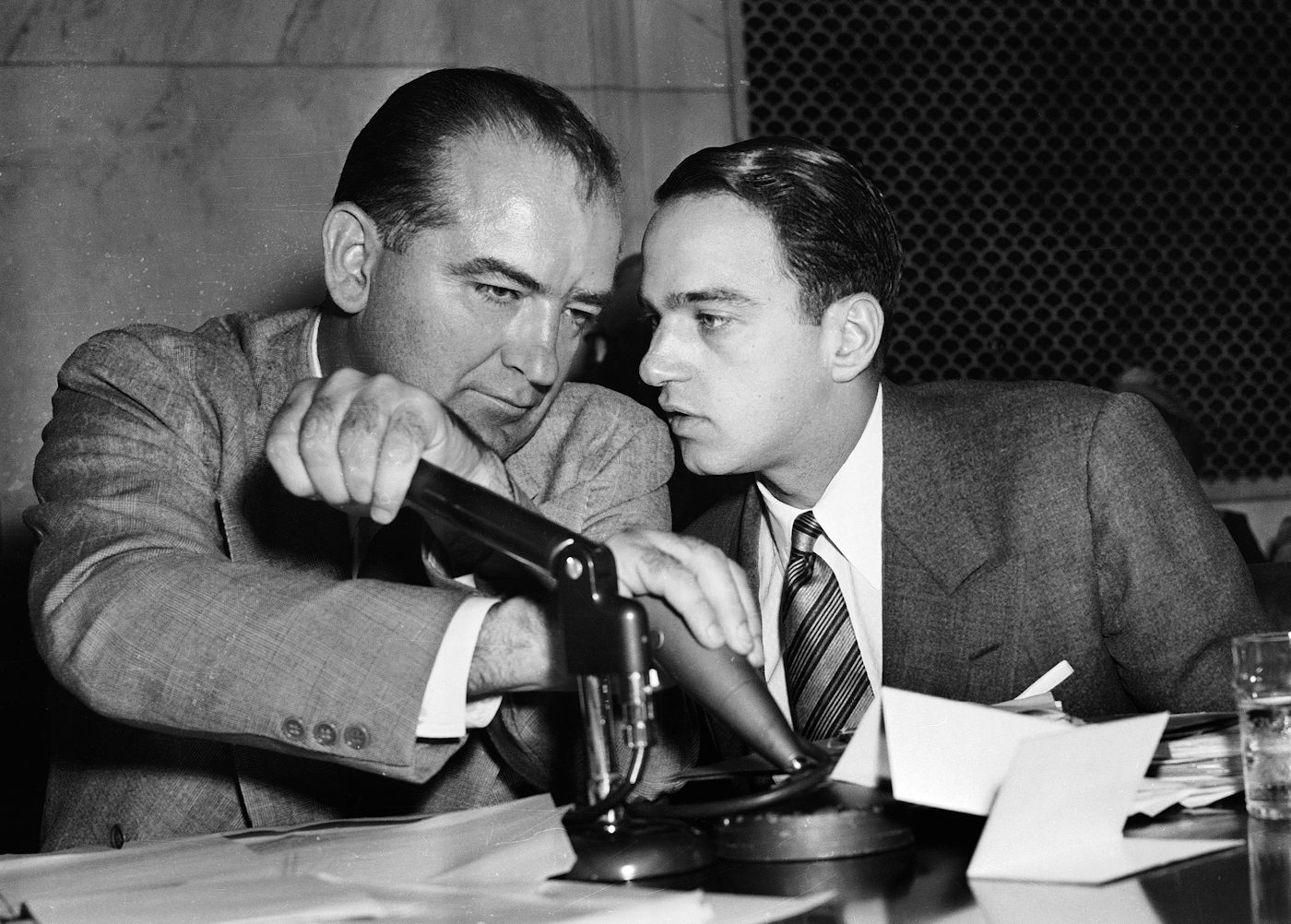
McCarthy covers the mic while having a whispered discussion with Cohn during a 1954 committee hearing. Photo | AP
Though Cohn was ruthless and
seemingly untouchable as McCarthy’s counsel and helped the senator
destroy many careers during both the red and lavender scares, his antics
in relation to his work on the committee would eventually lead to his downfall
after he attempted to blackmail the Army in return for preferential
treatment for committee consultant and Cohn’s rumored lover, David
Schine.
After he was forced to leave
McCarthy’s side due to the scandal, Cohn returned to New York to live
with his mother and practice law. A few years later New York Judge David
Peck, a long-time associate of former CIA Director Alan Dulles, orchestrated Cohn’s hire to the New York law firm Saxe, Bacon and O’Shea — which
would later become Saxe, Bacon and Bolan after Tom Bolan, a friend of
Cohn’s, became a partner in the firm. Upon his hire, Cohn brought the
firm a slew of Mafia-linked clients, including high-ranking members of the Gambino crime family, the Genovese crime family and, of course, Lewis Rosenstiel.
What happened in Suite 233?
The connections Roy Cohn built during
the 1950s made him a well-known public figure and translated into great
political influence that peaked during the presidency of Ronald Reagan. Yet, as Cohn built his public image, he was also developing a dark private life, which would come to be dominated by the same blackmail pedophile racket that appears to have first begun with Lewis Rosenstiel.
One of the “blackmail parties” Susan
Kaufman attended with her then-husband Lewis Rosenstiel was hosted by
Cohn in 1958 at Manhattan’s Plaza Hotel, suite 233. Kaufman described Cohn’s suite as
a “beautiful suite…all done in light blue.” She described being
introduced to Hoover, who was in drag, by Cohn, who told her that
Hoover’s name was “Mary” in a fit of barely concealed laughter. Kaufman testified that young boys were present and Kaufman claimed that Cohn, Hoover and her ex-husband engaged in sexual activity with these minors.
New York attorney John Klotz, tasked
with investigating Cohn for a case well after Kaufman’s testimony, also
found evidence of the “blue suite” at the Plaza Hotel and its role in a
sex extortion ring after combing through local government documents and
information gathered by private detectives. Klotz later told journalist and author Burton Hersh what he had learned:
Roy Cohn was providing protection. There were a bunch of pedophiles involved. That’s where Cohn got his power from — blackmail.”
Perhaps the most damning confirmation
of Cohn’s activities in Suite 233 comes from statements made by Cohn
himself to former NYPD detective and ex-head of the department’s
Human-Trafficking and Vice-Related Crimes Division, James Rothstein. Rothstein later told John DeCamp — a former Nebraska state senator who investigated a government-connected child sex ring based in Omaha — among other investigators, that Cohn had admitted to being part of a sexual blackmail operation targeting politicians with child prostitutes during a sit-down interview with the former detective.
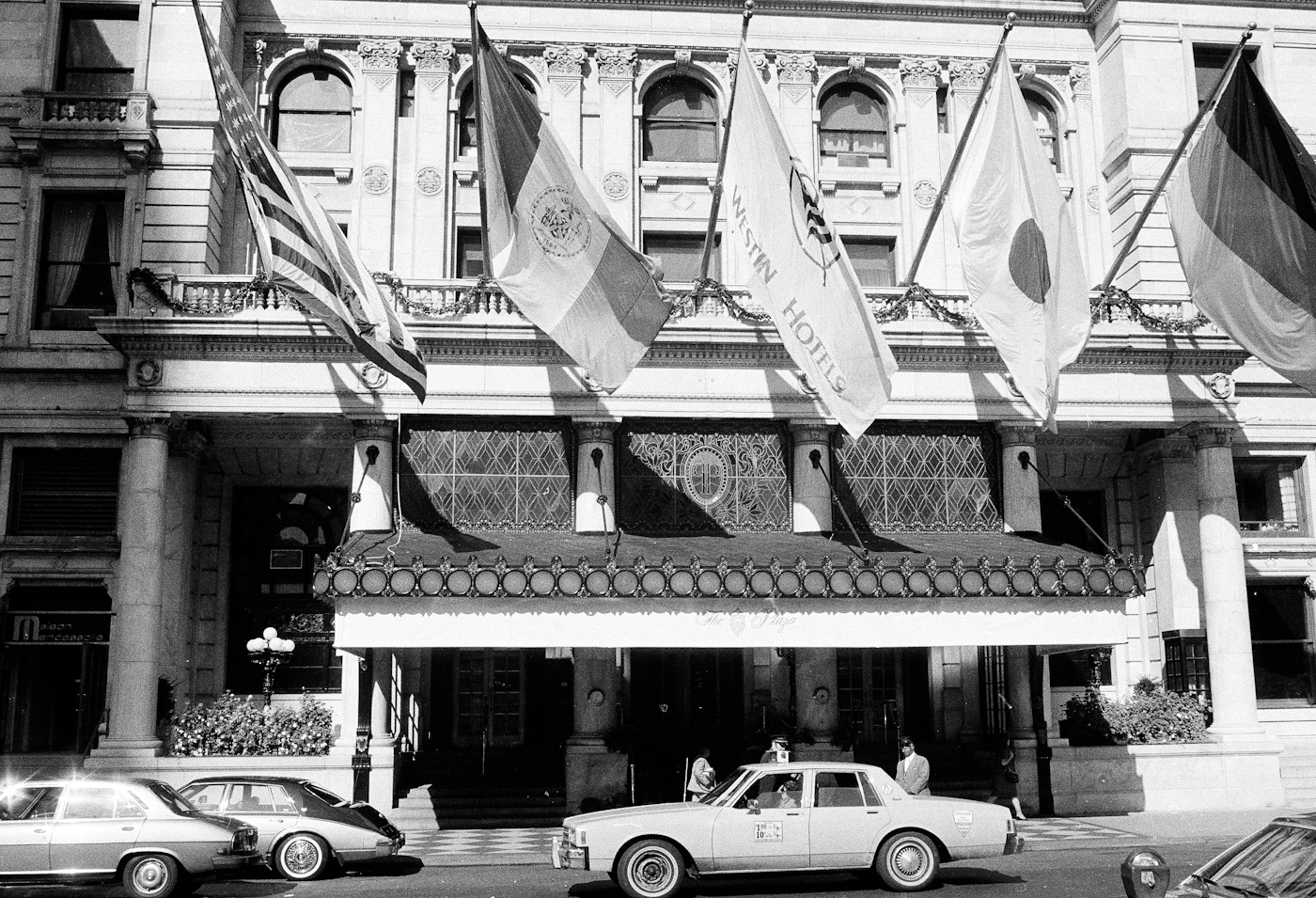
Flags fly over the main entrance of the Plaza Hotel in New York City in 1982. Suzanne Vlamis | AP
Rothstein told DeCamp the following about Cohn:
Cohn’s job was to run the
little boys. Say you had an admiral, a general, a congressman, who did
not want to go along with the program. Cohn’s job was to set them up,
then they would go along. Cohn told me that himself.”
Rothstein later told Paul David Collins, a former journalist turned researcher, that Cohn had also identified this sexual blackmail operation as being part of the anti-communist crusade of the time.
The fact that Cohn, per Rothstein’s recollection, stated that the child sex blackmail ring was part of the government-sponsored anti-communist crusade
suggests that elements of the government, including Hoover’s FBI, may
have been connected at a much broader level than Hoover’s own personal involvement, as the FBI closely coordinated with McCarthy and Cohn for much of the red scare.
It is also worth noting that among
Hoover’s many “secret” blackmail files was a sizeable dossier on Senator
McCarthy, the contents of which strongly suggested that the senator
himself was interested in underage girls. According to journalist and author David Talbot,
Hoover’s file on McCarthy was “filled with disturbing stories about
McCarthy’s habit of drunkenly groping young girls’ breasts and buttocks.
The stories were so widespread that they became ‘common knowledge’ in
the capital, according to one FBI chronicler.”
Talbot, in his book The Devil’s Chessboard, also cites Walter Trohan, Washington Bureau Chief of the Chicago Tribune,
as having personally witnessed McCarthy’s habit of molesting young
women. “He just couldn’t keep his hands off young girls,” Trohan would
later say. “Why the Communist opposition didn’t plant a minor on him and
raise the cry of statutory rape, I don’t know.” Perhaps the answer lies
in the fact that those “planting” minors on their political foes were
McCarthy’s allies and close associates, not his enemies.
The question that necessarily arises
from revelations regarding Cohn’s activities in Suite 233 is who else
was Cohn “protecting” and servicing with underage prostitutes? One of
them could very well have been one of Cohn’s close friends and clients,
Cardinal Francis Spellman of the Archdiocese of New York, who was said
to have been present at some of these parties Cohn hosted at the Plaza
Hotel.
Spellman — one of the most powerful
figures in the Catholic Church in North America, who was sometimes
referred to as “America’s Pope” — was accused of not only condoning pedophilia in the Catholic church and ordaining known pedophiles
including Cardinal Theodore “Uncle Teddy” McCarrick, but also engaging
in it himself to such an extent that many New York area priests widely referred to him as “Mary.” Furthermore, J. Edgar Hoover was said to have a file detailing the cardinal’s sex
life, suggesting Spellman’s involvement in the ring and pedophile
protection racket in which Cohn and Hoover were personally involved.
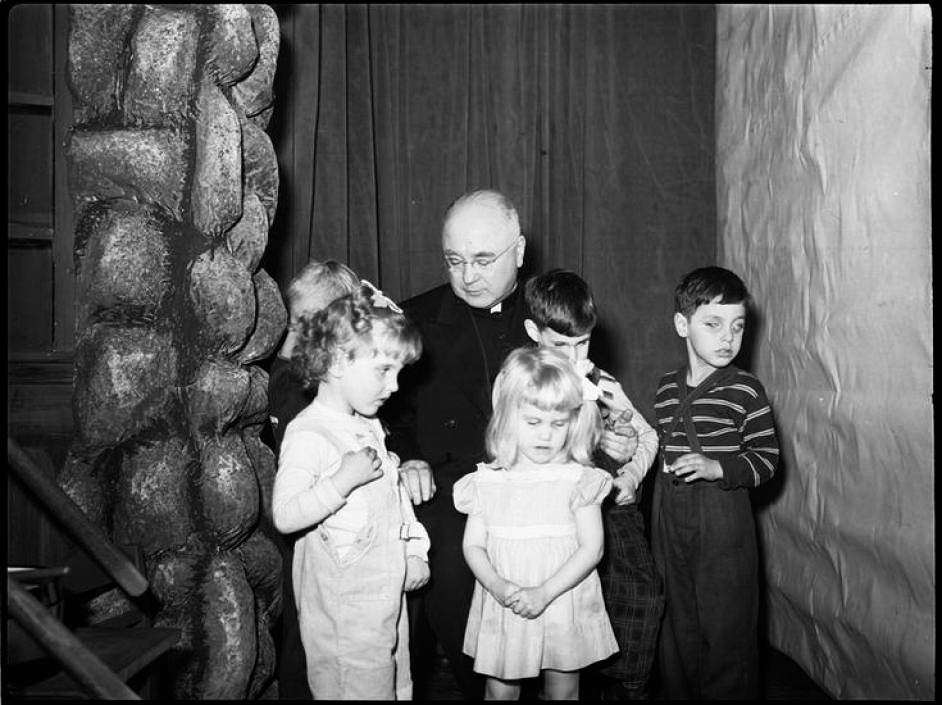
Cardinal Francis ‘Franny’ Spellman. Photo | Museum of the City of New York
People close to Cohn often remarked
that he was frequently surrounded by groups of young boys, but seemed to
think nothing of it. Similar off-handed comments about Epstein’s
penchant for minors were made by those close to him prior to his
arrest.
Controversial Republican political operative and “dirty trickster” Roger Stone — who, like Donald Trump, was also a protégé of Cohn — said the following about Cohn’s sex life during an interview with The New Yorker in 2008:
Roy was not gay. He was a man who liked having sex with men. Gays were weak, effeminate. He always seemed to have these young blond boys around. It just wasn’t discussed. He was interested in power and access.” (emphasis added)
Compare this quote from Stone to what Donald Trump, who was also close to Cohn, would later say about Jeffrey Epstein, with whom he was also closely associated:
I’ve known Jeff for 15
years. Terrific guy. He’s a lot of fun to be with. It is even said that
he likes beautiful women as much as I do, and many of them are on the younger side. No doubt about it — Jeffrey enjoys his social life.” (emphasis added)
Though it is unknown how long the sex
ring at the Plaza Hotel continued, and whether it continued after
Cohn’s death from AIDS in 1986, it is worth noting that Donald Trump purchased the Plaza Hotel in 1988. It would later be reported and confirmed by then-attendees
that Trump “used to host parties in suites at the Plaza Hotel when he
owned it, where young women and girls were introduced to older, richer
men” and “illegal drugs and young women were passed around and used.”
Andy Lucchesi, a male model who had helped organize some of these Plaza Hotel parties for Trump, said
the following when asked about the age of the women present: “A lot of
girls, 14, look 24. That’s as juicy as I can get. I never asked how old
they were; I just partook. I did partake in activities that would be
controversial, too.”
The Roy Cohn Machine
Roy Cohn was only at the beginning of
his career when he waded his way into the underground sexual blackmail
ring apparently led by Lewis Rosenstiel. Indeed, when Cohn first met
Hoover, he was only 23 years old. Over the next three decades or so,
before his death from AIDS-related complications in 1986 at the age of
56, Cohn built a well-oiled machine, largely through his close
friendships with some of the country’s most influential figures.
Among Cohn’s friends were top media personalities like Barbara Walters, former CIA directors, Ronald Reagan and wife Nancy, media moguls Rupert Murdoch and Mort Zuckerman, numerous celebrities, prominent lawyers like Alan Dershowitz, top figures in the Catholic Church and leading Jewish organizations like B’nai B’rith
and the World Jewish Congress. Many of the same names that surrounded
Cohn until death in the late 1980s would later come to surround Jeffrey
Epstein, with their names later appearing in Epstein’s now-infamous
“little black book”.
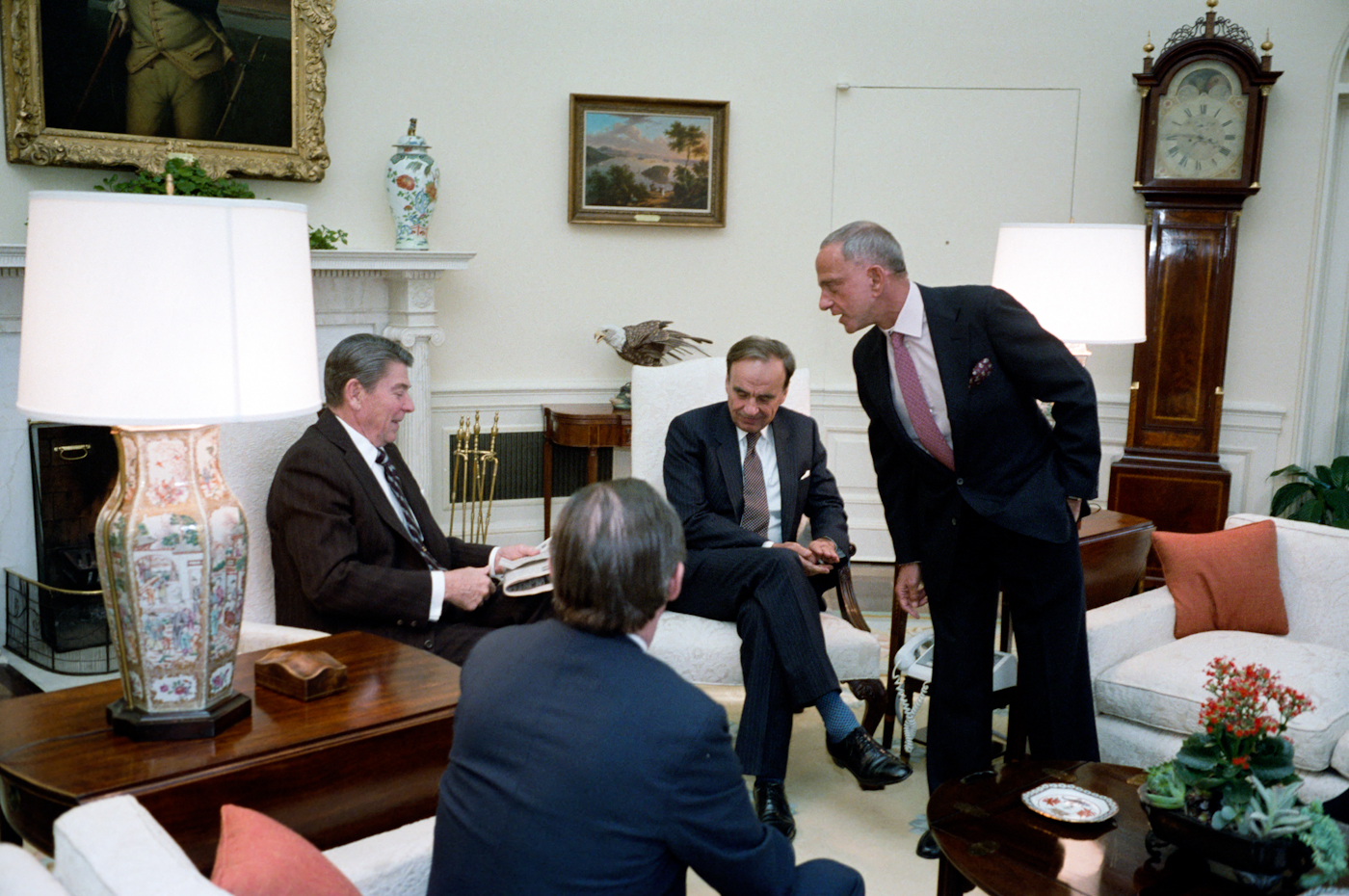
Reagan
meets with Rupert Murdoch, U.S. Information Agency Director Charles
Wick, and Roy Cohn in the Oval Office in 1983. Photo | Reagan
presidential library
While President Trump is clearly
connected to both Epstein and Cohn, Cohn’s network also extends to
former President Bill Clinton, whose friend and longtime political
advisor, Richard “Dirty Dick” Morris, was Cohn’s cousin and close associate. Morris was also close to Clinton’s former communications director, George Stephanopoulos, who is also associated with Jeffrey Epstein.
Yet, these were only Cohn’s
connections to respectable members of the establishment. He was also
known for his deep connections to the mob and gained prominence largely
for his ability to connect key figures in the criminal underworld to
respected influential figures acceptable to the public sphere.
Ultimately, as New York attorney John Klotz stated, Cohn’s most powerful
tool was blackmail, which he used against friend and foe, gangster or
public official alike. How much of that blackmail he acquired through
his sexual blackmail operation will likely never be known.
As Part II of this exclusive
investigation will reveal, Cohn and Epstein, and the sexual blackmail
operations they ran share many things in common, including not only many
of the same famous friends and patrons, but also connections to
intelligence agencies and consortiums of mob-linked businessmen, the
modern-day equivalents of Samuel Bronfman and Lewis Rosenstiel who have
since rebranded as “philanthropists.”
Part II will also reveal that Cohn’s
operation was known to have successors, as revealed by a series of
scandals in the early 1990s that have since been swept under the rug.
The significant amount of overlap between Epstein’s and Cohn’s covert
activities in sexual blackmail and their ties to many of the same
powerful individuals and circles of influence strongly suggest that
Epstein was one of Cohn’s successors.
As will be shown in the final
installment of this report, Epstein is only the latest incarnation of a
much older, more extensive and sophisticated operation that offers a
frightening window into how deeply tied the U.S. government is to the
modern-day equivalents of organized crime, making it a racket truly too
big to fail.
Feature photo | A composite image shows from left to right,
Lewis Rosenstiel, Jeffrey Epstein, and Roy Cohn. Graphic | Emma Fiala
Whitney Webb is a MintPress News journalist
based in Chile. She has contributed to several independent media outlets
including Global Research, EcoWatch, the Ron Paul Institute and 21st
Century Wire, among others. She has made several radio and television
appearances and is the 2019 winner of the Serena Shim Award for
Uncompromised Integrity in Journalism.
 A
concept that’s becoming increasingly useful is “Analog Equivalent
Rights.” Culture and knowledge should be just as available in the
digital space, as it is in the analog space. We should enjoy exactly the
same privacy rights and civil liberties online, as we do offline. The
concept is completely reasonable, and nowhere near rocket science. This
is a tremendously useful concept, as it makes lawmakers and others
reflect on the liberties they are killing off for their children,
sometimes followed by a mental shock as they realize what has been going
on with their silent approval. Let’s have a look at how this applies to
public libraries.
A
concept that’s becoming increasingly useful is “Analog Equivalent
Rights.” Culture and knowledge should be just as available in the
digital space, as it is in the analog space. We should enjoy exactly the
same privacy rights and civil liberties online, as we do offline. The
concept is completely reasonable, and nowhere near rocket science. This
is a tremendously useful concept, as it makes lawmakers and others
reflect on the liberties they are killing off for their children,
sometimes followed by a mental shock as they realize what has been going
on with their silent approval. Let’s have a look at how this applies to
public libraries.






